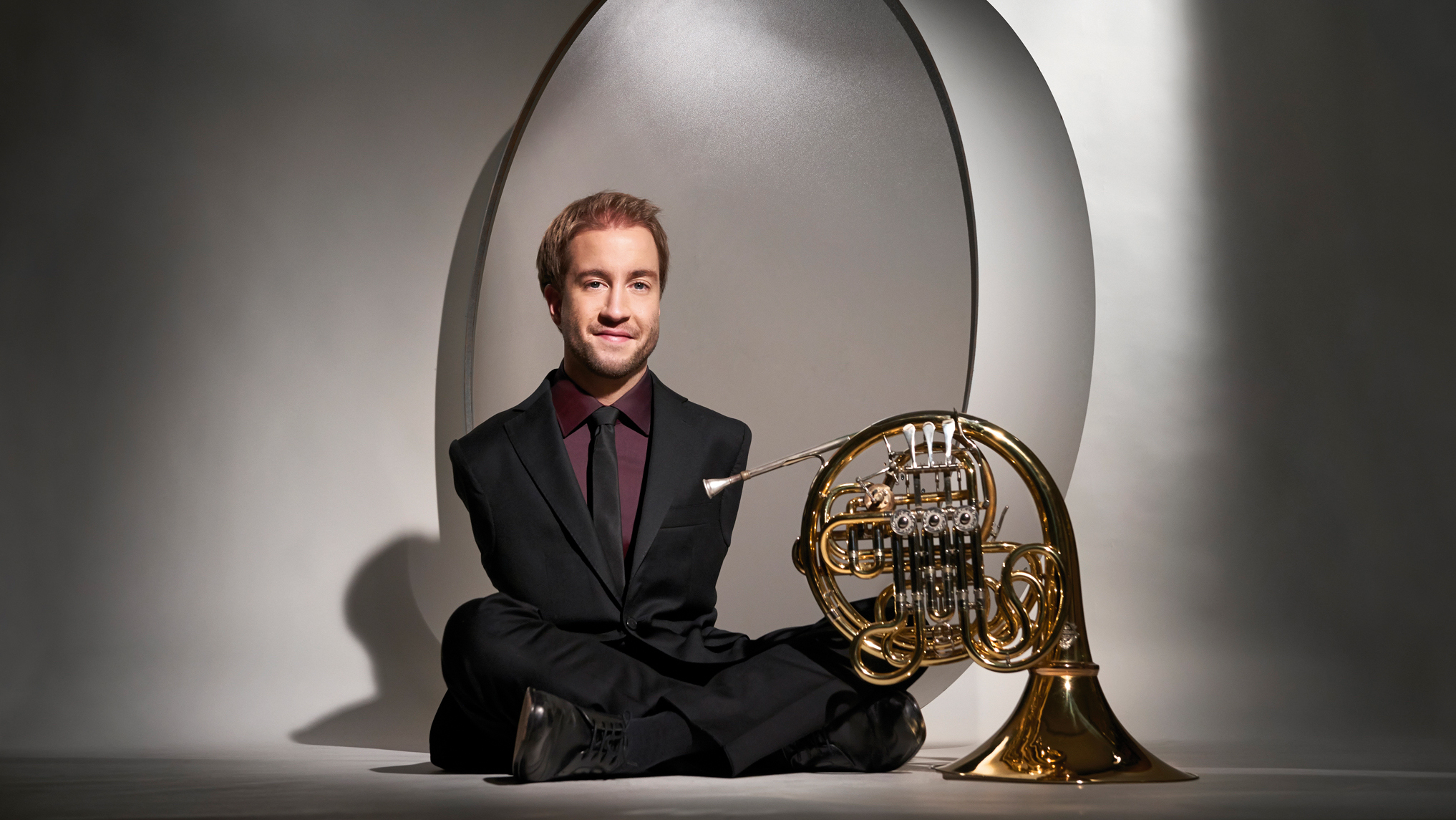Felix Klieser’s bio follows the same format as most classical musicians’ promotional literature. There’s a bit about his early studies – in this case, at the Hanover University of Music, Drama and Media – and reference to several prizes, including the Leonard Bernstein Award of the Schleswig-Holstein Musik Festival. The German horn player has recently been named as one of Bournemouth Symphony Orchestra’s (BSO) artists in residence.
He returns to the UK next month to play pieces by Mozart and Brahms at the Lighthouse in Poole (February 16). But you’ll have to look hard in the supporting material to find mention of Klieser’s distinctive – and probably unique – technique: he plays the French horn with his feet.
While it doesn’t have the range of solo music that, say, the piano or violin does, the French horn is by no means neglected. There are concertos written by Mozart, Schumann and Haydn, a sonata by Beethoven and glorious chamber music such as Britten’s Serenade for Tenor, Horn and Strings. Despite its richly resonant sound, the French horn has been classed as an ‘endangered instrument’ in the UK, alongside the likes of the bassoon, oboe and double bass. Several music services offer incentives for students to take up the French horn – there is a concern that there might be a shortage of players in the near future. As well as the economic factors that preclude so many pupils from studying orchestral instruments, there are practical reasons why the French horn isn’t an obvious choice. Compared to the flute or clarinet, it is heavy – both to play and to lug around school. It also requires physical strength and fine technique, most of which comes from the lips (the ‘embouchure’). These considerations make it all the more extraordinary that Klieser would independently choose this instrument – aged just four. Progress was slow but steady; over time he developed a specific way to play the French horn using his toes to move the valves.
Klieser kindly met me over Zoom, where I euphemistically asked him about his particular approach. “I actually haven’t had to make many adaptations,” he says. “About 95 per cent of playing the horn comes from the mouth – it’s about lips and airstreams. The biggest problem is that most horn players put their right hand in the bell – I had to find a way to create the same sound. No one could teach me this; there was no book to read. I tried many different things and it was very complicated.
“It’s funny when I hear people describing my ‘special technique’ as though it is something others could learn or use as a teaching device,” he continues. I wonder whether my blush is noticeable on screen.
“Of course seeing the feet using the valves seems completely strange to most people but to me it is normal. I don’t find it complicated. I have no idea whether it is more difficult to play with feet or hands.” The penny drops. I have been guilty of ableism: like many others before me, I have assumed that the typical musical technique is the ‘right’ one, and that alternatives are ‘adaptations’.









